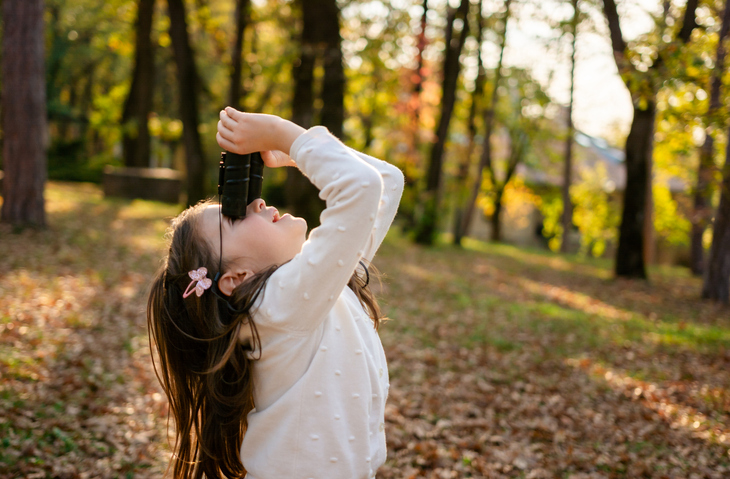When summer rolls around, it’s the perfect time to unplug, get outside, and make some memories with your kids. For me, nothing beats combining a bit of adventure with learning—and that’s exactly what bird spotting offers. It’s a chance to slow down, explore nature, and share moments of discovery with your little ones. Plus, it’s free, it gets everyone moving, and it’s surprisingly addictive once you get the hang of it.
I’ll admit, when I first came up with the idea of a “bird spotting challenge,” I wasn’t sure how my kids would react. I mean, birds? Could that really hold their attention? But the moment we packed our backpacks and headed out, the excitement began. From packing snacks to spotting our first bird, it’s become one of our favorite summer traditions. Here’s how our bird-spotting adventures unfolded—and why you might want to try it with your kids this summer.
Starting the Adventure: Planning and Packing
Every great adventure starts with a little preparation. The night before our first bird-spotting trip, I sat down with my kids and introduced the idea. To my surprise, they were immediately intrigued. I think the word “challenge” got their attention—I made it sound like a quest, something we’d tackle together as a team.
We decided to pack light, but smart. Here’s what we brought along:
- A simple pair of binoculars (just one pair we could share).
- A notepad and crayons for drawing and noting down birds.
- A kid-friendly bird guide we borrowed from the library.
- Plenty of water and snacks (because, let’s face it, snacks are essential for keeping spirits high).
- Sunscreen and hats for those sunny days.
I involved the kids in packing, which made them feel like active participants from the get-go. They were in charge of choosing their favorite snacks and decorating their notepads. By the time we were ready to go, they couldn’t wait to hit the trail.
Finding the Perfect Spot
You don’t have to trek deep into the wilderness to spot birds. We started small—a local park with trees, open fields, and a pond. Birds are everywhere, even in urban areas, so don’t overthink it. The key is to choose a spot where you can walk, sit, and observe without too many distractions.
Our first outing was a learning experience. I quickly realized that bird spotting is less about walking and more about pausing. Kids are naturally curious, but their energy levels can sometimes work against them when it comes to quiet observation. So, I turned it into a game. “Who can spot a bird first?” became our mantra, and we’d take turns staying still and listening for chirps or rustling leaves.
It didn’t take long before my youngest shouted, “Look, a red one!” Sure enough, a bright cardinal was perched on a nearby branch. The look of pride on her face was priceless. That moment set the tone for the rest of the day.
The Joy of Discovery
What surprised me most about bird spotting was how much it slowed us down—in a good way. Normally, our family outings are filled with movement: hiking, biking, or playing at the park. But bird spotting required us to stop and really look at our surroundings. It wasn’t just about ticking birds off a list; it was about noticing their behavior, their colors, and their songs.
My kids were fascinated by the tiny details. “Why does that bird have a long beak?” “What’s it eating?” “Why is it hopping instead of flying?” These questions turned into mini science lessons. We’d look up facts in our bird guide or make guesses and discuss them as a family. It felt like we were learning together, which made it all the more rewarding.
One of the highlights of our first trip was spotting a blue jay. It landed on a branch right above us, and we had plenty of time to admire its vibrant feathers. My eldest decided to draw it in her notepad, and her sketch became a keepsake we still treasure. Moments like that—when everyone is fully present and engaged—are what make this activity so special.
Overcoming Challenges
Of course, not every part of bird spotting is smooth sailing. There were a few moments of frustration, like when my youngest got bored during a particularly quiet stretch or when we couldn’t agree on what type of bird we’d just seen. But those challenges became opportunities to teach patience and teamwork.
I also learned to manage expectations. Some days, we’d see plenty of birds; other days, not so much. The key was to focus on the experience rather than the results. Even if we didn’t spot many birds, we spent quality time together outdoors, which was the real win.
Turning It Into a Challenge
To keep things interesting, we turned bird spotting into an ongoing challenge for the summer. We created a simple checklist of birds we hoped to see, based on what was common in our area. Every time we spotted a new bird, we’d check it off the list and celebrate the achievement. We even came up with silly rewards, like choosing the evening’s dessert or picking the next destination.
The checklist gave us a sense of purpose and kept the excitement alive. By the end of the summer, we’d spotted everything from robins and sparrows to hawks and hummingbirds. Each new discovery felt like a small victory, and the kids couldn’t wait to share their stories with friends and family.
Lessons Learned Along the Way
Looking back, our summer bird-spotting adventures taught us more than I ever expected. Here are a few takeaways I’d share with any dad thinking about trying this with their kids:
- Patience is key. Bird spotting is about waiting, watching, and listening. It’s a great way to teach kids the value of slowing down and staying focused.
- Curiosity fuels learning. My kids asked so many questions, and it was a joy to see their curiosity grow with each trip.
- Nature is full of surprises. We didn’t just see birds—we also spotted butterflies, turtles, and even a deer on one outing. It reminded us how much there is to discover when you spend time outdoors.
- It’s about connection. More than anything, these outings brought us closer as a family. We laughed, learned, and created memories that will stick with us for years.
Wrapping It Up
By the end of the summer, bird spotting had become more than just an activity—it was a shared passion. My kids started noticing birds everywhere, even in our backyard or outside the grocery store. They’d point them out and ask, “What kind of bird is that?” It was clear that this simple challenge had sparked something lasting.
So, if you’re looking for a fun, inexpensive, and meaningful way to spend time with your kids this summer, I can’t recommend bird spotting enough. It’s a chance to explore nature, learn something new, and bond in ways you might not expect. All you need is a pair of binoculars, a bit of curiosity, and a willingness to embrace the adventure.
Who knows—you might even learn to spot a few birds yourself. Just don’t be surprised if your kids outshine you by the end of the summer. Mine certainly did!
There’s your blog—original, engaging, and full of personal touches!


